This blog is obviously devoted to reviewing books, for the most part, but after reading imyril’s post on Severance, I starting thinking of the great scenes of SFF TV that I watched this past year. I can’t pretend to any great knowledge of SFF TV shows, but this year forced me to pay attention because several series had some deeply engaging stories. I won’t try to explain the background for each series. I’m just pointing to some of the scenes that resonated deeply with me. So here are some great SFF TV scenes that lead me to go back and watch them again and again. There are definite spoilers in what follows.
His Dark Materials
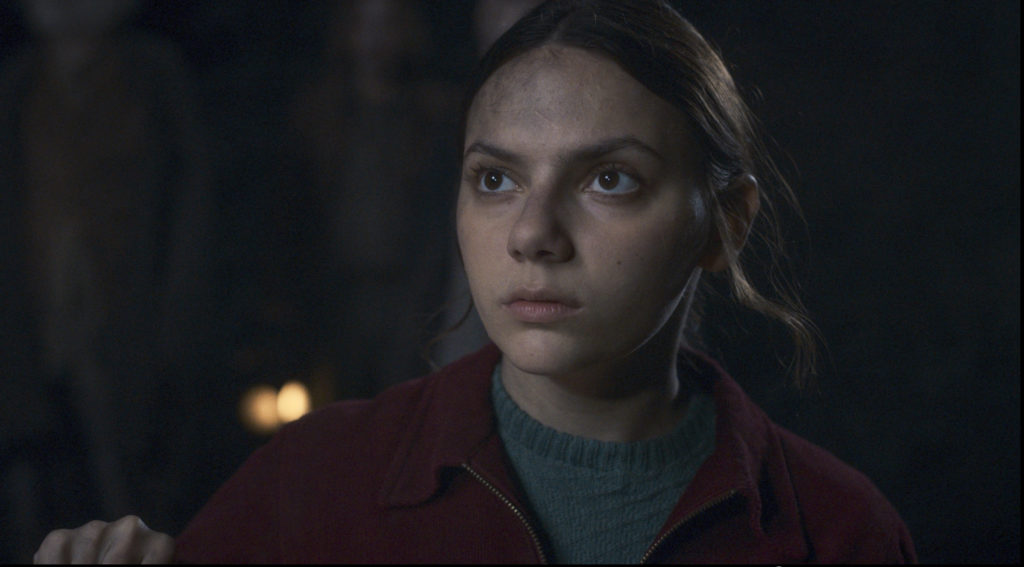
The first one comes from His Dark Materials, the three season adaptation of the Philip Pullman novels. For me, it’s the daemons attached to each character for life, serving as conscience and counselor, that created so many unique moments. Lyra Belacqua and her daemon, Pantalaimon or Pan, a shape-shifting feret, spend most of the story searching for their dear friend, the young boy Roger. He has been abducted along with many other children by a group that turns them over to an experimental station operated by Lyra’s mother, the strange Mrs. Coulter. Lyra succeeds in rescuing Roger from the clutches of this outpost of the ruling Magisterium only to have him seized by her father, Lord Asriel. Asriel, trying to launch a war against the Magisterium, wants Roger so that his energy can open a new world where he can organize an army to fight the war. That scene is especially frightening as Asriel sacrifices Roger by separating him from his daemon, causing a blinding explosion and pillar of light that forms the entrance to another world.
That brutally powerful scene leads Lyra to search for Roger in the Land of the Dead. And that sets up the most heart-wrenching scene of all. Lyra finds her way to a sort of ante-chamber to the Land of the Dead, a huge, bare building with various waiting rooms and columns of silent dead people making their way to their assigned places. There she learns that she, like all humans, has been assigned a Death who shadows them throughout their lives and then escorts them to the waters they must cross when they actually die. The scene when Death explains the rules to Lyra is beautiful, but the clincher comes when Lyra finds that she cannot cross the water with Pan. They are never supposed to be separated except in death, but Lyra intends to return to her world after getting Roger and somehow assumed that her daemon would stay with her. But no, the boatman sternly tells her. There are no exceptions; Pan must stay behind. Pan pleads with Lyra not to go, but she is adamant, despite the strong bond of love between these two. When she finally does part with Pan and leaves him behind in the fog to an uncertain fate, she just screams as the reality of the emotional and physical separation sinks in. That separation is brilliantly acted, written and directed, and gives a powerful end to the fourth episode of the third and final season.
Andor
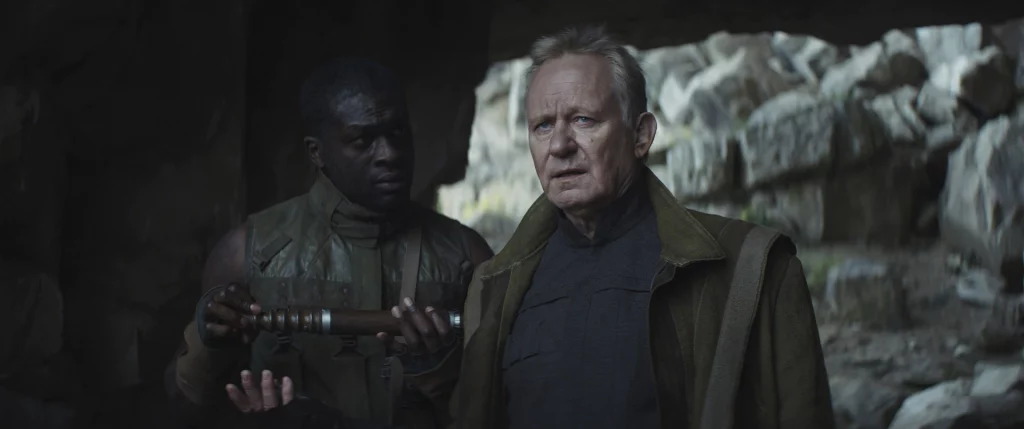
Andor is, for me, far and away the most interesting Star Wars live action TV series. It features a brilliant cast and excellent scripts that bring to life the ferment and plotting that lead to revolution. Andor himself captures this spirit in his arc from a self-serving thief to dedicated revolutionary. Stellan Skarsgård, playing Luthen, draws Cassian Andor into his first mission as a rebel, and his performance is a highlight of the series. He transforms himself before our eyes from the hardened rebel leader to his persona as a charming jewel merchant with access to the highest levels of society on the planet Coruscant. His greatest scene comes when he is giving instructions to a rebel who has infiltrated the military. The man is under great pressure and lashes out at Luthen, saying he knows nothing about the sacrifices the people he commands are making. Luthen then gives a brilliant speech about everything he has lost. It’s all the more telling because of Skarsgård’s understated delivery.
But there are many great speeches. While Cassian is on the expedition to steal a huge payroll from a seemingly impregnable Imperial fortress, one of the rebel band, a young man named Karis Nemick, summarizes the revolutionary manifesto he has written. It beautifully captures the rebel spirit, even including a paraphrase of Che Guevara, no less. There is also the unforgettable “One way out” line delivered by Kino Loy, played by Andy Serkis, as he and Cassian lead an escape from a prison fortress. And there is the posthumous hologram broadcast of Cassian’s mother, played by Fiona Shaw, that stirs a crowd into action against the Imperial troops. It all adds up to a convincing portrait of a world on the edge of rebellion, with so much more depth of motivation and carefully executed action than most Star Wars fare of recent years.
House of the Dragon
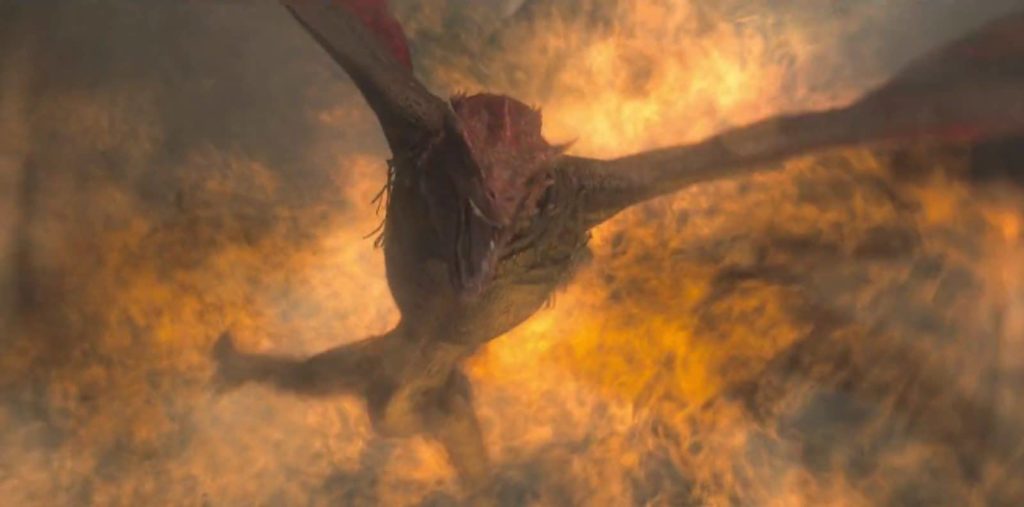
House of the Dragon, like Andor, has been reviewed endlessly so I won’t try to summarize its complicated plot. I was riveted by one scene in particular in the final episode of the first season. It was the mission of Rhaenyra’s younger son Lucerys, seeking to gain a declaration of loyalty from House Baratheon for his mother as she assumes the title of queen. He rides his dragon, Arrax to the Baratheon castle but sees the giant dragon, Vhagar, there ahead of him. Aemond, his kin whose eye Lucerys had taken in a fight years before, has already secured the allegiance of that house. When Lucerys starts riding Arrax back to tell the queen, he is pursued by Aemond and Vhagar. It’s a stunning scene as the dragons swoop through a dark, cloudy sky, and Vhagar appears suddenly, plunging down on the far smaller dragon and killing both beast and rider. It is clearly a cause for war, one that pushes Rhaenyra to her fateful decision in the final moments of the season. That dragon fight is so well captured, it becomes one of the most powerful scenes in the series to date.
Severance
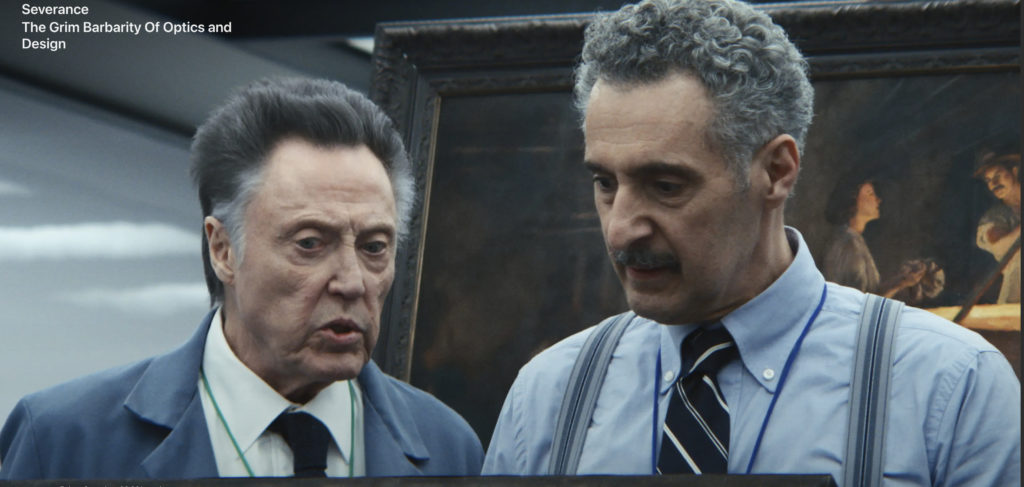
I’ll defer to imyril’s excellent post for an overall appreciation of Severance and zero in on one scene or really relationship. The series is a brilliant and chilling portrayal of the ultimate in immaculately orderly corporate life that conceals violence under the calmly executed tasks of its compliant staff. They all forget their non-work lives as soon as they enter the corporate realm, and the story is about the gradual unwinding of the false front of the Lumon Corporation. What I want to call attention to is the brilliant portrayal of the slowly awakening love between two characters. John Turturro as Irving Bailiff, forever quoting the founder’s wisdom, is drawn more and more to Burt Goodman, played by Christopher Walken. Goodman heads a different department, and as the two invent excuses to see each other, they cross a great divide that keeps each area of corporate activity hidden from the others. Among an outstanding cast, Turturro and Walken create an unforgettably tender bond within the bare white walls, long maze-like halls and rigid rules of the corporation.
Finally, I’ll just quickly mention a couple of great performances.
In The Peripheral, the rather lame adaptation of William Gibson’s novel, Alexandra Billings is brilliant as Inspector Ainsley Lowbeer. Lowbeer is one of Gibson’s best characters, and Billings catches her wonderfully. Unfortunately, she only enters the story in episode 6 (of 8) and really deserves more screen time. Lastly, I want to mention the little noticed Night Sky, cancelled after one season, in which an elderly couple in a small town quietly live with a tunnel under their property that leads to a different world. Sissy Spacek and J.K. Simmons are perfect as the couple, but the rest of the story around their tunnel goes off in strange directions that are poorly handled. So, no great loss, but it should have been a lot better.
What are your favorite scenes and SFF shows of the past year?


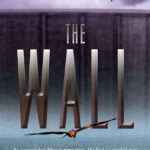

As a long time Dr. Who fan, seeing the fifth and seventh Doctor interacting with Tegan ad Ace during the Power of the Dalek was a highlight for me.